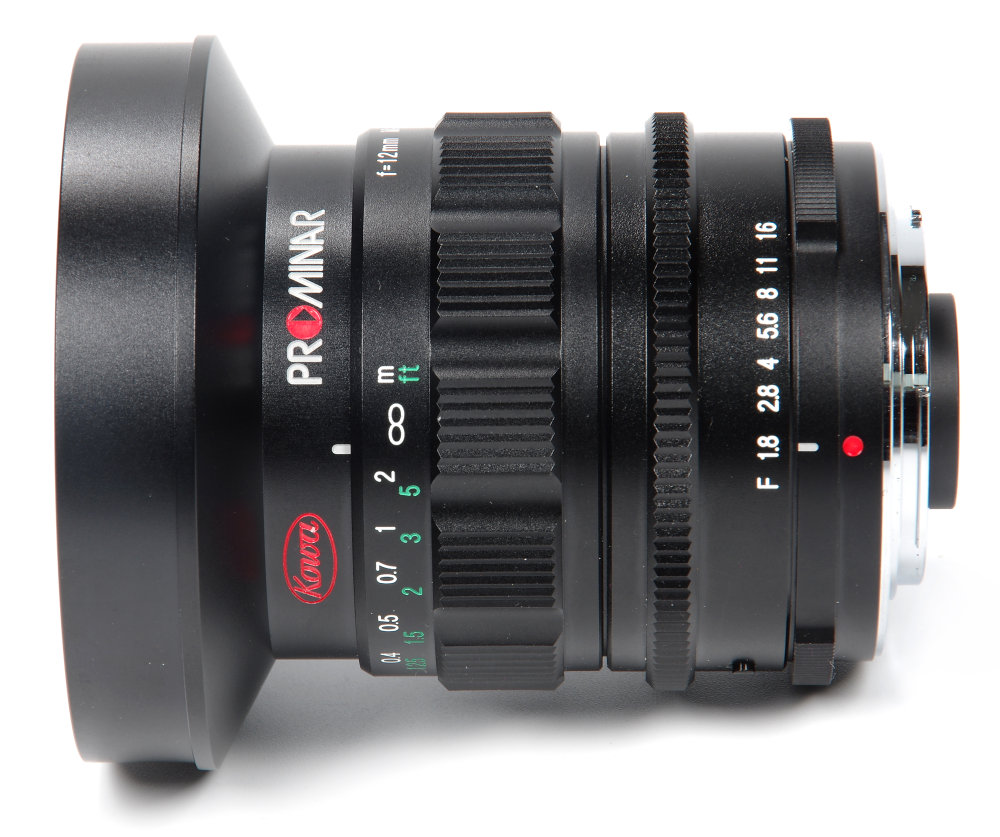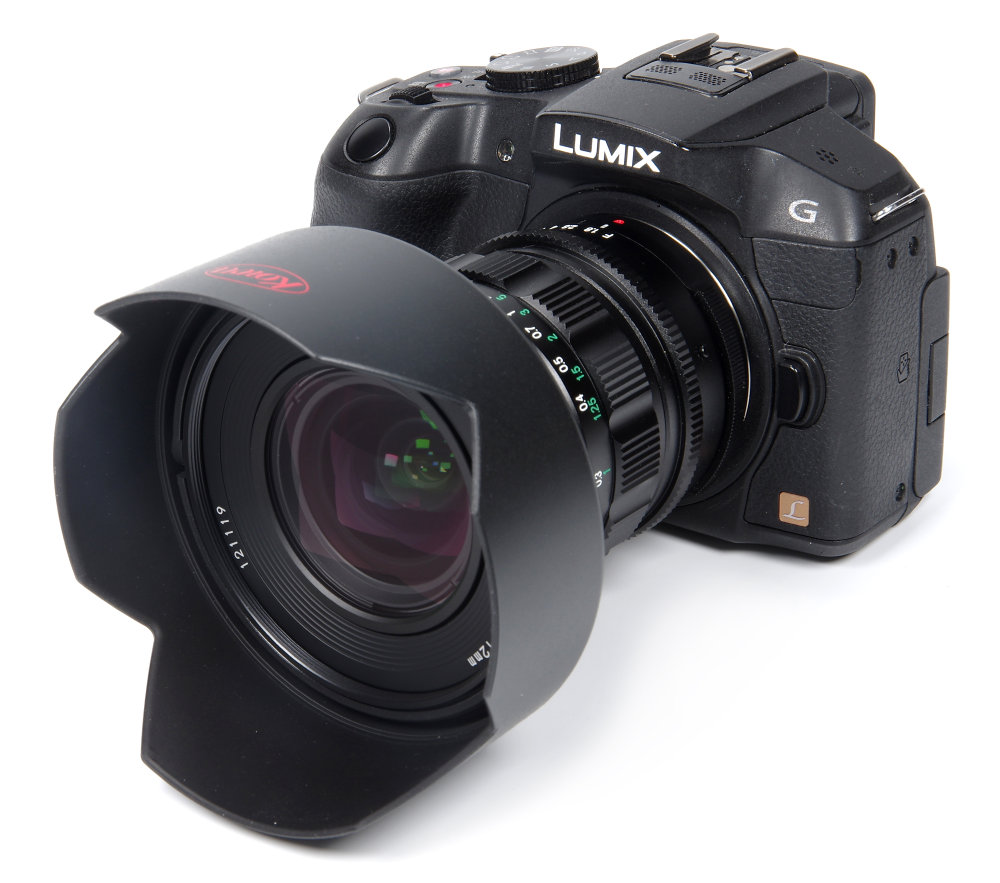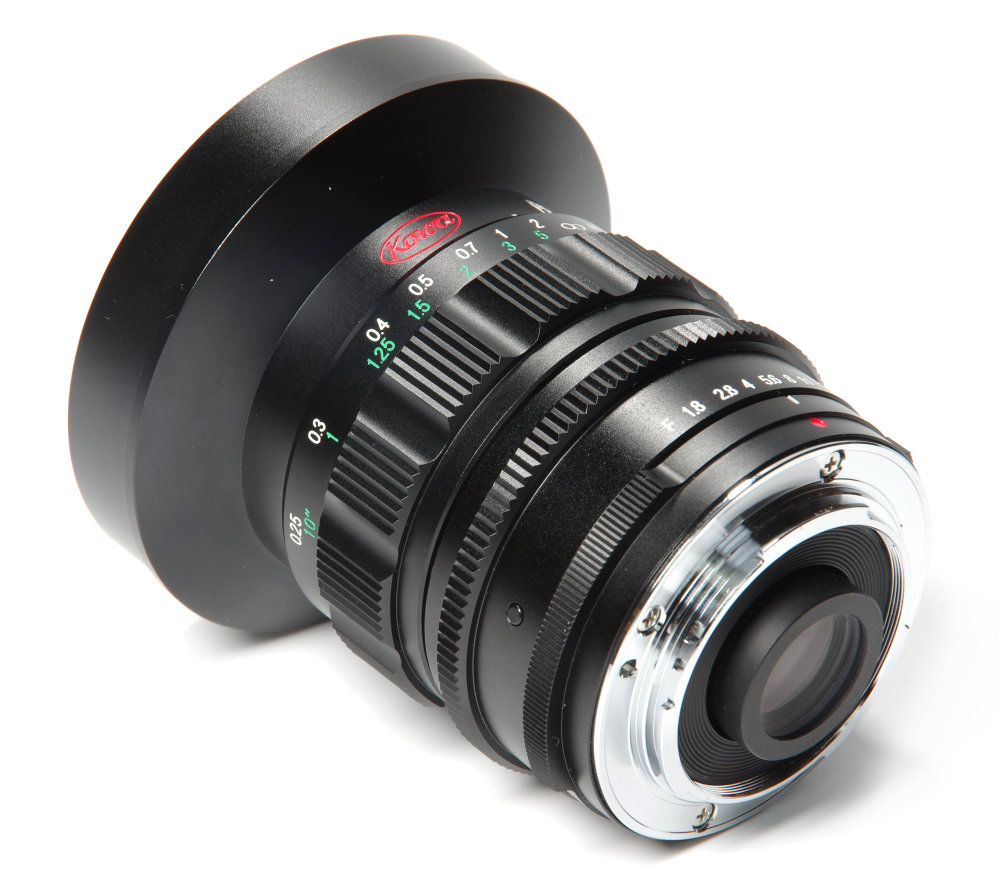Kowa Prominar 12mm f/1.8 Review
Kowa Prominar 12mm f/1.8 Handling and Features
The lens itself is quite compact but moderately heavy for its size, weighing in at a solid 475g. The front element and its surrounding rim are large compared to the general feel of the lens, with the push on lens hood dwarfing the whole. As before, the hood is held in place by a locking screw rather than the usual bayonet fit. This is simple and effective, albeit looking slightly strange with the bright chrome screw jutting out from the rim of the hood. As the hood just pushes into place we do need to align the marks carefully to avoid vignetting. There is ample room to insert filters into the 72mm thread, without having to remove the hood every time.
The focusing ring has very sculpted and hard ribbing to ensure a good grip, helping to maintain the vintage look of the lens as a whole. The lens is manual focus only, down to 0.2m, just under 8 inches. This represents a maximum magnification of 0.1x, or 1:10. This is conventionally close for a lens of this focal length. There is no depth of field scale, although there are ample distances marked in feet and metres to make this a useful possibility. 12mm on MFT format equates with a “35mm format equivalent” of 24mm, a classic focal length that is suitable for a wide range of wide-angle applications, including landscape, architecture and street photography. It is much easier to focus than the 8.5mm and the focusing aids on the G6 make a useful difference to the accuracy. The focusing and aperture rings move in the direction of Canon cameras, rather than Nikon/Pentax which move in the opposite way.
Finally, we have the aperture ring, with a design that is very intelligent indeed. The review setting used was f/stops, which are provided with firm, positive click stops at full stop intervals, although one-third stops are quite easy to approximate. Pressing a small button enables the whole ring to be rotated through 180 degrees to bring into play the T stop settings. The T stops, usually used for movie shooting, are clickless. The whole idea is highly inventive and works beautifully.
Lens construction is 12 elements in 10 groups, a relatively complex formula no doubt necessitated by the unusually wide maximum aperture. The aperture comprises 9 circular blades, a feature used to enhance the bokeh of the lens.
A 24mm-equivalent lens is a powerful choice, very versatile as mentioned. The f/1.8 bright aperture is a huge bonus, that being something that for a full frame camera could be a very large and very costly lens.
Add your message
Please login here or if you've not registered, you can register here. Registering is safe, quick and free.
photodo Stats
428 MTF tests
74 in-depth photodo reviews
100+ users join each day
Help the lens community by reviewing or rating a lens today via our lens search
Latest Lens Reviews
- Chinon 28mm f/2.8 Vintage Lens Review
- Canon EF 70-200mm f/4L IS II USM Lens Review
- Samyang AF 85mm f/1.4 EF Review
- Sigma 70mm f/2.8 DG Macro Art Review
- Samyang AF 24mm f/2.8 FE Review
- Meike 50mm f/1.7 Review
- Tamron 70-210mm f/4 Di VC USD Review
- Lensbaby Burnside 35mm f/2.8 Review
- Asahi Super Takumar 50mm f/1.4 Review
- Asahi Super-Multi-Coated Takumar 135mm f/3.5 Review



